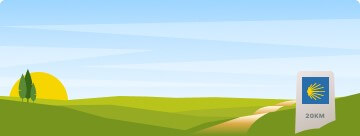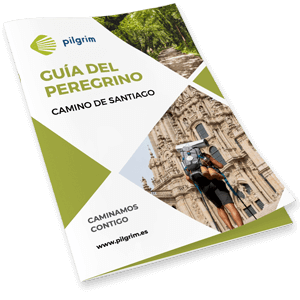Deba
‹ Back to the stage
Deba
- Residents: 5.430 aprox.
- Province: Guipúzcoa
Information
Get to know Deba
The town of Deba, or Deva in Basque, is a small town that had great importance thanks to the commercial port, which is currently used as a marina.
Its main attractions are the beaches of Santiago and Lapari, the coves, the promenades and the great hospitality of its inhabitants.
Location
How to get there
The most direct option to get to Deba is the AP-8 freeway and the national road N-634, which connects the town with the northern half of the peninsula.
The most direct option to get to Deba is the AP-8 freeway and the national road N-634.
The airports of San Sebastian and Bilbao are relatively close, it is a very fast option to connect with European and Spanish cities, although these do not offer a wide range of flights.
There are also bus lines that connect the town with cities such as Donostia, Bilbao, Irun, Santander, A Coruña and small towns in the surrounding area. The companies that offer these lines are; Alsa, Autobuses Pesa and Euskotren.
The railway lines that stop in the village go to San Sebastian and Bilbao.
History / Culture
What to see
Casa Aldazábal
The Aldazabal-Murguia House has a single floor divided into three streets, the central one being the highest. The highlights of its facade are the balconies built with ornate masonry and closed by wrought iron railings. It is currently listed as a Historic-Artistic Monument.

Casa Consistorial
It is the building that houses the current City Hall of the city and was built in 1747 with limestone masonry in baroque style, which has arched porches on the first floor and balconies on the first and second.
On the main facade we find a balcony decorated with a fan of wrought ironwork and three sandstone shields, that of the Royal Crown, that of Gipuzkoa and that of Deba.

Casa de Aguirre
The House of Aguirre is considered one of the most important mansions of the urban architecture of the fifteenth century. As for its structure, it is divided into two floors, a first floor and an adjoining cabin.
The most remarkable feature of the exterior is the main facade composed of ashlar masonry and with large windows on both sides of the front and the interior decoration of the main staircase and the living room, with wood carvings and ornamentation on the floor and ceilings.

Iglesia de Santa María
The Church of Santa Maria built between the XV-XVI centuries was declared a National Monument and is considered one of the most majestic works of Gipuzkoa since it is comparable to any cathedral thanks to its large dimensions and rich ornamentation.
The highlights of its exterior are the polychrome façade and the altarpiece depicting the life of the Virgin Mary, both pieces belong to the temple that existed on the site before the construction of the present church and the interior highlights the hall plant that is divided into three naves of equal height.
Special mention deserves the Cloister since it is considered one of the oldest and the different chapels that we find inside the church.

Cueva de Praileaitz
The Praileaitz Cave is an excavation that was found between 2006 and 2007 in which its Paleolithic cave paintings stand out. These paintings are composed of red dots and stripes, all of them isolated or forming small series.

Cueva de Urtiaga
The Urteaga Cave is considered one of the most important excavations in the region thanks to the great variety and quality of the extracts found there. Among the findings are two skulls from the Azilian period and a third found after the Civil War. The latter is considered one of the most important due to its longevity and for having been the main link to study the evolution from Cro-Magnon to Basque man.

El Puente de Deba
The Deba-Mutriku Bridge was opened in 1866 and is currently considered the most representative bridge of the architecture of Gipuzkoa and in 2006 was closed to traffic to ensure better conservation. It is a work of great quality with abutments, piers and vaults and lined with light gray limestone masonry. On the lower part of the bridge, in the third arch, there is a ring that was consciously nailed to mark the course of the estuary.

Ermita de San Nicolás de Lastur
The Hermitage of San Nicolás de Lastur, built in 1625, had a large wooden altarpiece that housed a crucified Christ, the Virgin Mary, San Nicolás, San Isidro and San Antonio de Padua. At present this was removed but the figures are placed on stone pedestals.
The legend of this temple tells that there was an old image of San Nicolas quite deteriorated and that the neighbors decided to replace it with a new one. When they proceeded to the incineration, the image did not fit in the bonfire so a neighbor decided with an axe to split it in half but it broke when trying to do so. When he saw what happened, he took a truncheon and when he tried to hit it, it also broke, so they decided to throw the image into the river that runs behind the hermitage. Soon after, a storm broke out that lasted three days and three nights, and these events were attributed to the carving, since when the image was removed from the stream, the storm ceased. In this situation the neighbors kept the image in the sacristy of the chapel until a few years ago it was deposited in the parish of Itziar.

Santuario de Nuestra Señora de Itziar
The Sanctuary of Our Lady of Itziar was built in the eighth century and renovated on numerous subsequent occasions, one of them in the sixteenth century. Because of these the church came to house a single nave divided into three rectangular sections but without intermediate columns.
The most remarkable features of the interior are the image in honor of the Virgin, considered one of the best preserved and most beautiful of the Basque iconography and the Plateresque altarpiece of the sixteenth century.
The most remarkable features of the interior are the image in honor of the Virgin, considered one of the best preserved and most beautiful of the Basque iconography and the Plateresque altarpiece of the sixteenth century.

Geoparque
The Geopark is an area formed by Zumaia, Deba and Mutriku that at first sight stands out for its pastures and forests as well as for its spectacular geology. This area presents 13 kilometers of cliffs formed by Flysch rocks (alternation of hard and soft rocks) that define the more than 60 million years of Earth’s history.

Cueva de Aixa
The Aixa Cave is considered one of the largest in the Basque Country thanks to its more than 12 kilometers long and its great depth. In it is formed the passage of the waters that fall from the hill to reach the Deba River.

San Sebastián de Elorriaga
The small Romanesque style Chapel of San Sebastian de Elorriaga was built in 1391 in the middle of the North Road towards Santiago. It is worth noting the Romanesque baptismal font that is currently preserved and the images of Andra Mari, San Roque and San Sebastian.
The most representative of the exterior structure is its belfry and the tile-covered roof.

El Paseo Cubierto y el Mercado
The Covered Walkway and the Market are located in a building built in 1905-1910 by Manuel Echave and declared of Cultural Interest in 1995. This set stands out for the decoration of its columns and the shield where we can see engraved the date of its construction.

La Cueva Ekain
The Ekain Cave was declared a World Heritage Site in 2008 thanks to the set of equestrian paintings inside, which belong to the Franco-Cantabrian parietal art. In addition to these paintings, there are others representing bison, deer, goats, etc. Forming a total of 70 cave figures that expand for 150 meters in length.
WINTER OPENING TIMETABLE
Tuesday to Sunday from 10:00 to 18:00Holidays and weekends from 10:00 to 19:00Monday closed
Monday closed
Weekends and holidays from 10:00 to 19:00
SUMMER HOURS
Tuesday to Sunday from 10:00 to 19:00 Monday closed
From Tuesday to Sunday from 10:00 to 19:00 Monday closed
Fees
General: 6€ Reduced: 5€
INFORMATION OF INTEREST
Phone: 943 868 811

Information of interest
Local police
943 608 040 / 689 125 889
Civil guard
943 894 369
Fire department
112
Civil protection
112
Town hall
943 192 840
Health center
943 192 452
Tourism office
943 192 452 / 620 430 069
Ifar Kalea, 4

We send you your itinerary
Enter your details and receive your travel itinerary by email
Recommended
Gastronomy
Recommended
Festivals and Pilgrimages
Local festivity
3 de febrero: San Blas
Local festivity
4 de febrero: Santa Ageda
Local festivity
El tercer domingo de mayo: Día del debarra
Local festivity
El primer sábado de mayo: Día de la Romería
Local festivity
El primer sábado del año: Feria del año nuevo
Local festivity
Las primeras semanas de enero: Las pruebas de bueyes
Local festivity
19 y 20 de enero: Fiesta de San Sebastián en Elorriaga
Local festivity
23 de junio: San Juan
Local festivity
29 de junio: Quema de los pellejos
Local festivity
10 de septiembre: Fiesta de San Nicolás
Local festivity
Del 14 al 18 de agosto: Fiestas de San Roke
Local festivity
El último sábado de septiembre: Fiesta vasca y el concurso de pintura al aire libre.
Local festivity
La última semana de mayo y la primera semana de junio: Semana de teatro en euskera.
Northern Way
On foot
34 stages




































